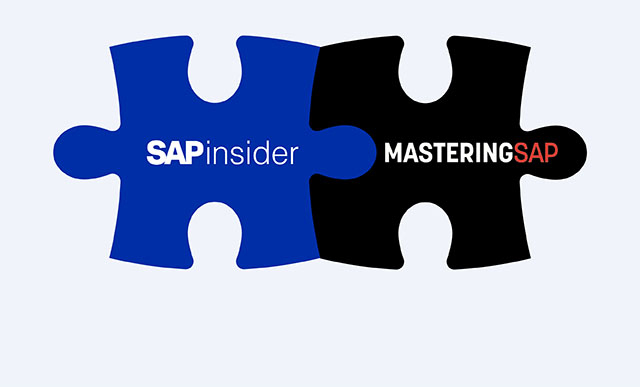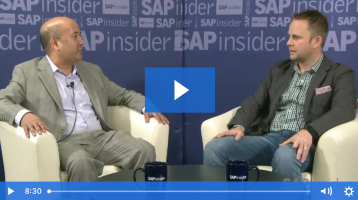As of Release 4.5, R/3 provides infotype-subtype configuration that allows you to indicate which countries can use an infotype. It allows you to omit invalid choices so that end users don't select them by mistake.
In a multi-country R/3 implementation, different countries often use different infotypes. For example, in the United States, employees have an infotype 0210 – Withholding Info W4/W5 US – which is not used in any other country.
As of Release 4.5, R/3 provides infotype/subtype configuration to allow you to indicate which countries can use an infotype. Indicating that a country does not use an infotype or subtype removes that infotype or subtype from the drop-down list. This way, you can omit invalid choices so that end-users don’t select them by mistake.
Some infotype assignments are preconfigured in R/3. For example, infotype 0210 is configured as permissible only for the United States. When a user maintains HR master data in transaction PA30 for a non-U.S. employee, Withholding Info W4/W5 US will not be in the list of infotypes displayed when the user presses F4 to select possible entries. Additionally, attempting to create the infotype by directly entering 0210 into the infotype field produces the error message,
Information type ‘Withholding Info W4/W5 US (0210)’ not permitted. This limits end-user confusion about which infotypes should be used and helps enforce country-specific differences. Therefore, when you create customer-specific infotypes or subtypes, you may want to configure which countries can use them.
To do this, you use the country of the person whose information is being maintained, not the country of the user entering the information. If you’re wondering how a person’s country is determined, it is resolved from the personnel area on infotype 0001 – Organizational Assignment. The personnel area is assigned to a company code (IMG menu path
Enterprise Structure>Definition>Financial Accounting>Define, copy, delete, check company code) and the company code is given a country (MOLGA) when it is defined (IMG menu path Enterprise Structure>Assignment>Human Resources Management>Assignment of Personnel Area to Company Code).
You can identify a Personnel Administration infotype or a subtype as country-specific by using table V_T582L, Infotypes – country-specific settings. The infotype must already be defined on V_T582A, Infotypes Attribute Customizing. If the infotype has subtypes, the subtypes must be entered on V_T591A, Subtype Characteristics. Entries already exist on V_T582A and V_T591A for any R/3 standard infotypes.
For a customer-specific infotype or subtype, the project team member responsible for the creation makes the entries on V_T582A and V_T591A. Let’s say that a project team member has been asked to create a new subtype for infotype 0009 – Bank Details. This new subtype will be called “6” and it will be used in Canada and Australia for corporate credit card reimbursements. Infotype 0009 – Bank Details is an R/3 standard infotype; therefore, an entry already exists on table V_T582A. To view the entry for the infotype on V_T582A, use transaction code SM30 or the IMG menu path
Personnel Management>Personnel Administration>Customizing Procedures>Infotypes>Infotypes.
Go to
V_T591A and enter your new subtype “6” with a text name of Other
Bank Details – CC Reim. This subtype has a time constraint of “2”, which means that it is optional for a person to have this information in the system. However, if you include the infotype, you can have only one subtype “6” record for infotype 0009 – Bank Details at any given time. To make this entry in V_T591A, use transaction code SM30.
Now that you have verified the infotype/subtypes are defined on the appropriate tables, register them as being country-specific by using the IMG menu path
Personnel Management>Personnel Administration>Customizing Procedures>Infotypes>Assign infotypes to countries. If you want to go straight to the customizing view V_T582L, use transaction SM30. On V_T582L, make the following entries:
- Infotype number – the number of the infotype you want to make country-specific. In our example, this is 0009 – for Bank Details.
- Subtype – the corresponding subtype name or number that you want to make country-pecific. Use the “*” designation to represent all of the subtypes for an infotype. We only want to restrict subtype “6,” so we’re entering a 6 into the subtype field.
- Country grouping – the MOLGA value for the country you want to filter. The system compares the MOLGA entered on the table against the MOLGA for a personnel number that is being processed by transaction code PA20 (Display Master Data) or transaction code PA30 (Maintain Master Data) to determine if the infotype/subtype should be displayed. Enter in 07 since this is the country MOLGA for Canada.
- Select one of the radio buttons: Permitted, Not perm., or Warning. (See Figure 1.) Permitted means that only the country indicated will be able to see the infotype/subtype combination via transaction codes PA20 (Display Master Data) and PA30 (Maintain Master Data). Not perm. means that the infotype cannot be maintained for persons in that country, but can be for countries without such an entry. Warning means that if an attempt is made to maintain the infotype for a person in that country, the user will receive a system-warning message, but can continue. Canada uses this infotype/subtype combination, so the radio button needs to be set to Permitted.

Figure 1
ESS deactivation screen
You can copy the new entry on table V_T582L so that you can reference MOLGA 13 instead of 07, making this permissible for Australia as well as Canada.
Kathy Howard
Kathy Howard is an SAP-certified consultant and a system architect at EDS. She has 20 years of experience in information technology, specializing in human resources applications. Howard has been working with SAP products since 1995. She has six information technology patents issued by the US Patent and Trademark office.
If you have comments about this article or publication, or would like to submit an article idea, please contact the
editor.
Dawn Burns
Dawn Burns is an SAP-certified human resources senior consultant and Quality Assurance Manager and HR Consultant with Howrey LLP. She is a former SAP Human Resources instructor for SAP America and has more than 12 years of experience in human resources and information technology.
If you have comments about this article or publication, or would like to submit an article idea, please contact the
editor.








